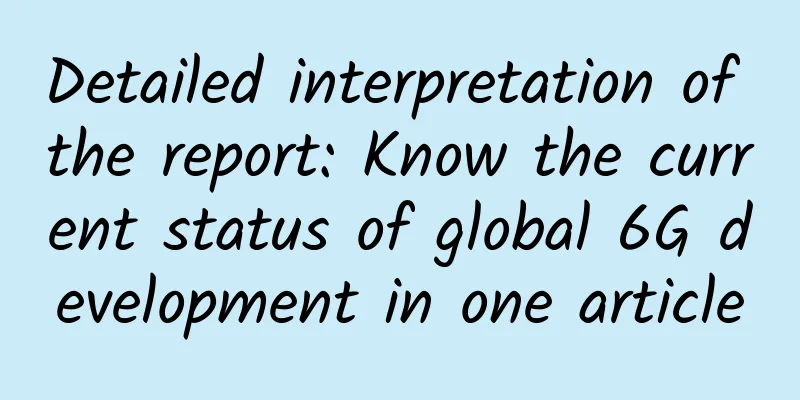5G Massive MIMO Says Goodbye to Power-hungry 5G Base Stations

|
The attacks on the large-scale construction of 5G base stations seem to have never stopped. On the one hand, the revolutionary applications of 5G have not appeared on the consumer side. On the other hand, the high power consumption has made "power hog" the most prominent label of 5G base stations. According to data from the Ministry of Industry and Information Technology, as of June 2021, a total of 961,000 5G base stations have been put into operation nationwide, and 5G networks have covered all prefecture-level cities, more than 95% of county-level areas, and 35% of township areas. However, netizens in some places have found that the 5G base stations in their area are in a dormant state late at night. The reason is to save electricity. The high energy consumption of base stations has also become a problem that plagues the industry.
5G base stations have been fully popularized in major cities (Image source: wirelessnews) According to relevant data, the annual power consumption of 5G base stations nationwide is expected to be 180 billion kWh, accounting for 2% of the country's power generation. At present, the energy consumption of a 5G base station is about 3 times that of 4G, and most of the electricity used by a complete 5G base station is in the four major parts of the base station, transmission, power supply, and air conditioning and heat dissipation. Such extremely high electricity consumption is obviously inconsistent with my country's "carbon peak" and "carbon neutrality" "dual carbon" goals. The "dual carbon" goals are driving the evolution of mobile networks to green 5G. It is expected that by 2030, my country's total mobile network carbon emissions will be 45% lower than now. China Mobile aims to achieve a 20% reduction in comprehensive energy consumption per unit of business by 2025; China Telecom expects the proportion of newly built 5G base station nodes to drop by 20% in 2025; China Unicom has determined that the growth rate of energy consumption in 2023 will reach its peak in 2023. Improve energy conversion and transmission efficiency (Image source: Huawei) To achieve the above goals, it is necessary to reduce the power consumption of 5G base stations. So how to reduce the power consumption of 5G base stations? 5G Massive MIMO is a great way to conquer the "power tiger" of 5G base stations! 5G Massive MIMO can improve energy conversion efficiency and become a new track for breakthrough green 5G innovation. 5G Massive MIMO achieves energy saving in 5G base stations through the following three aspects: First, maximize the use of the antenna surface. The windward area of the traditional MM is only 0.3 square meters, which is much smaller than the 0.7 square meters of the existing low-frequency antenna surface. The antenna surface space of the current site is not fully utilized. On the basis of meeting the antenna surface engineering specifications of less than 0.8 square meters of windward area, the new green version of MM can achieve barrier-free deployment, make full use of space, and maximize the utilization rate of antenna surface resources. New green version of ultra-large-scale antenna array (Image source: Huawei) Second, green energy saving is maximized. The ultra-large-scale antenna array realizes narrower service channel beams. When the terminal receives the same power, the base station can be configured with lower transmission power to reduce base station energy consumption. For example, the new green version of MM is configured with 160W transmission power to achieve the coverage of the traditional MM 320W. According to theoretical analysis, under the premise of the same coverage experience for edge users, the new green version of MM can reduce energy consumption by more than 50%. Third, maximize the experience coverage. Without increasing the base station transmission power, the new green version of MM can improve the downlink coverage by 3dB. At the same time, due to the enhancement of the base station's receiving performance, the uplink coverage will also be enhanced by 3dB. According to simulation data, the average experience of edge users of the new green version of MM can be improved by 30%. Maximizing the use of the roof surface (Image source: Huawei) Regarding the above three aspects, Gan Bin, Chief Marketing Officer of Huawei's Wireless Product Line, said, "From the perspective of the development law of green energy saving in mobile networks, breakthrough innovation can achieve a step-by-step improvement in bit energy efficiency. Now, we have found the next breakthrough innovation direction around Massive MIMO. At present, the energy-saving method of Massive MIMO is to continuously optimize the active parts such as mid-range radio frequency and power amplifier to enable a gradual improvement in bit energy efficiency. Through software and hardware innovations such as baseband algorithms and antennas, we have realized ultra-large-scale antenna arrays, maximized antenna surface utilization, green energy saving and experience coverage, and opened up a new green track for 5G Massive MIMO." Through 5G Massive MIMO technology, the signal coverage area of 5G base stations will not decrease without increasing power. In terms of experience, both uplink and downlink coverage are improved at the same time, and users who access the Internet at the edge of the base station can access the Internet faster than before. It can be seen that 5G Massive MIMO can completely subdue the "power tiger" of 5G base stations. Compared with the traditional heat dissipation of the modified computer room and air conditioning, it can undoubtedly make the 5G network greener at the technical level, thereby achieving the "dual carbon" goal. |
<<: 5G spending of the three major operators decreased, and the number of package users increased
>>: China Mobile announces it has built more than 500,000 5G base stations
Recommend
How to quickly master the HTTP protocol (HD mind map)
The HTTP protocol is extremely complex. It affect...
[Black Friday] Summary: Yunding Internet/Megahertz Cloud/Fluorescent Cloud/Journey Cloud
The blog has received some emails from merchants ...
An Shumei, President of Ruijie University: The difficulty of integrating industry and education lies in the change of concepts
[Original article from 51CTO.com] "Industry-...
The persistence behind comprehensive, stable and high-quality CDN: integration + self-built
On November 16, 2016, GFIC2016, hosted by DVBCN&a...
AI brings innovative value, Huawei says it is time for AI to enter data center infrastructure
On November 15, 2018, the 4th Data Center Infrast...
DiyVM: Japan/USA/Hong Kong CN2 VPS starting from 50 yuan per month, dual core/2G memory/50G SSD/5~200M bandwidth
Regular sharing, how about DiyVM? DiyVM is a Chin...
SDN: From ideal to reality
SDN is more than 10 years old. When it first came...
If 2G and 3G networks are to be shut down, can users still use their mobile phones to surf the Internet and make calls normally?
Recently, the news that China Mobile's 3G bas...
5G is here. How to build the emerging edge DCs?
[[285118]] What does the data center and computer...
The significance of optimizing the supply chain network design of enterprises
While the concept may seem simple in theory, the ...
"Rehabilitate" the Ethernet all-optical network! China Construction Association publishes the first standardization document for smart park construction
"Smart Park" is not a new concept. In t...
OneTechCloud: Hong Kong CN2 quarterly payment 20% off 64 yuan/quarter, Hong Kong BGP monthly payment 30% off 46 yuan/month, US CN2 GIA monthly payment 10% off
OneTechCloud is a Chinese hosting company founded...
Three Misconceptions about Edge Computing
With millions of machines and objects connected t...
The difference between edge computing and distributed computing
Edge computing focuses on placing computing and s...
ICO is suspended and blockchain needs to develop
ICO disguised as blockchain is like a glass of be...









